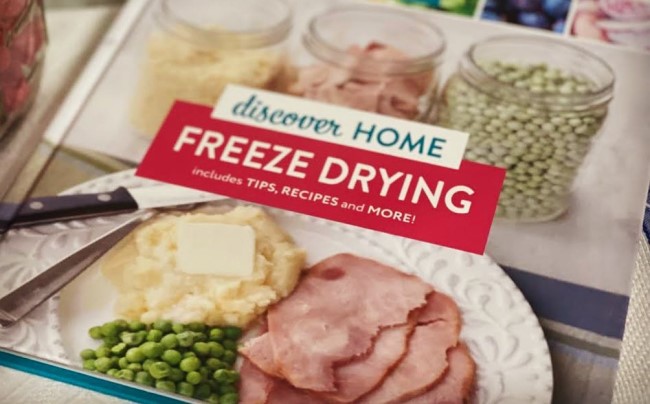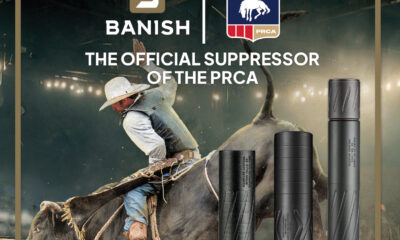Camping & Survival
DIY Emergency Food: Dehydrators vs. Freeze-Drying

Image courtesy facebook.com/homefreezedryer
Collecting guns, ammo, and a bunch of high-speed gear is the sexy part of being prepared for a crisis.
But at the end of the day all that equipment won’t do you a damn thing if you don’t have the nourishment to keep yourself on your feet. When was the last time you looked in the cupboard and took stock of what you actually have available? Is it stuff that you or your family would actually eat? How healthy is it?
Whether you simply have a surplus from your home garden, are making serious preparations for a natural disaster, or are simply interested in saving money by buying food in bulk and preserving it for later, two great options are dehydrators and freeze dryers. With them, you can make and preserve your own versions of the most popular boxed foods like cheeses, dairy, potatoes, herbs, and spices to make shelf-stable meals like homemade Au Gratin potatoes … and it’s actually pretty easy. Here’s my compare and contrast of the two methods. (There are others, of course, like canning and simple freezing, but that’s another article.)
First, let’s discuss the process for each in simple terms.
Freeze Dryers: Freeze-drying involves freezing the food at low temperatures and then slowly removing the ice (sublimation) under vacuum conditions. This process preserves the food by removing moisture without causing damage.
Dehydrators: Dehydration works by circulating warm air over the food to remove moisture. This process shrinks and preserves the food by reducing its water content.
See what I mean about being similar? Both techniques remove the liquid from food to preserve it. But each method is completely different in how it achieves the process.
Nutrient Retention
Freeze Dryers: Freeze drying retains more nutrients and preserves the flavor and texture of the food better than dehydration.
Dehydrators: Dehydration can lead to some nutrient loss due to exposure to heat during the drying process.
Shelf Life
Freeze Dryers: Foods preserved using freeze-drying have a longer shelf life compared to foods dehydrated in a dehydrator, as freeze-drying removes more moisture.
Dehydrators: Foods dehydrated in a dehydrator have a shorter shelf life due to the higher moisture content left in the food.
Equipment and Cost
Freeze Dryers: Freeze dryers are more expensive and require specialized equipment, making them a significant investment.
Dehydrators: Dehydrators are more affordable and accessible for home use, as they are generally simpler in design and cost less than freeze dryers. It’s even possible to make one yourself.
Texture and Taste
Freeze Dryers: Freeze-dried foods retain their original texture, taste, and appearance better than foods dehydrated in a dehydrator.
Dehydrators: Dehydrated foods can sometimes become leathery or tough, affecting the overall texture and taste.
Time and Complexity
Freeze Dryers: Freeze-drying is a more time-consuming and complex process compared to dehydration, requiring more preparation and specialized equipment.
Dehydrators: Dehydration is a simpler and quicker process, making it more convenient for everyday home use. In fact it is so simple kids can even make things like homemade fruit leather.
Pros and Cons of Dehydrators:
Pros:
- Affordability: Dehydrators are generally more affordable than freeze dryers, making them a cost-effective option for home use.
- Ease of Use: Dehydrators are user-friendly and require minimal setup. They typically involve slicing food and placing it in the dehydrator.
- Preserves Nutrients: While some nutrient loss occurs during dehydration, it is less compared to other preservation methods like canning.
- Versatility: Dehydrators can be used to preserve a wide variety of foods, including fruits, vegetables, herbs, and meats.
Cons:
- Limited Shelf Life: Dehydrated foods have a shorter shelf life compared to freeze-dried foods due to higher moisture content.
- Texture Changes: Dehydrated foods may become leathery or tough, which can affect the overall eating experience.
- Energy Consumption: Dehydrators can be energy-intensive, especially if running for long periods of time.
Pros and Cons of Freeze Dryers:
Pros:
- Extended Shelf Life: Freeze-dried foods have a significantly longer shelf life compared to dehydrated foods due to the removal of moisture.
- Retains Nutrients and Flavor: Freeze drying preserves the nutritional content and flavor of the food better than dehydration.
- Lightweight: Freeze-dried foods are lightweight and easy to transport, making them ideal for camping, hiking, and emergency preparedness.
- Rehydration: Freeze-dried foods can be rehydrated to a state similar to fresh food, maintaining taste and texture.
Cons:
- Cost: Freeze dryers are expensive appliances, making them a significant investment for home use.
- Complexity: Freeze-drying is a more complex process compared to dehydration, requiring specialized equipment and knowledge.
- Time-Consuming: Freeze-drying is a time-consuming process, often taking longer than dehydration.
- Fragility: Freeze-dried foods are more fragile and can be easily crushed, affecting their texture and appearance.
Some of the most commonly dehydrated foods include:
- Fruits
- Vegetables
- Herbs
- Meats low in fat to make jerky
- Nuts and Seeds
- Grains and Legumes
- Cheese (can be dehydrated into powder form)
- Yogurt (can be dehydrated into yogurt drops)
Some of the most common freeze-dried foods include:
- Fruits
- Vegetables
- Meats
- Dairy Products (Milk, Cheese, Ice cream, Yogurt)
- Entrees and Meals
- Pasta dishes
- Soups
- Stews
- Casseroles
- Breakfast scrambles
Freeze-drying may sound better, but in practice more people preserve foods using a dehydrator because of the ease of use and its low barrier to entry. A decent dehydrator can cost as little as $30 on sale, whereas a freeze drier set up can start in the $2000 range. The choice between the two methods ultimately depends on your priorities, budget, and intended use of the preserved foods. I personally started with the cheaper dehydrator until I saved the money for a freeze dryer. Even after I purchased a freeze dryer, I still use the dehydrator. (You really can’t make jerky or fruit leathers with a freeze drier.) I like to think of both units as a one-two punch—each part of the plan for extending my food options year-round.
—James the “XDMAN” Nicholas Mr. UnPewFessional Himself!
-

 Hunting2 months ago
Hunting2 months agoDrain the Swamp: Corruption Scandal at Washington State’s Fish & Wildlife
-

 Adventure3 weeks ago
Adventure3 weeks agoDoes the “Big Beautiful Bill” Have a Public-Lands Wart?
-

 Adventure1 month ago
Adventure1 month agoHowling in Cuckoo: How Mexican Wolves are Fostered
-

 Gear1 week ago
Gear1 week agoLet Freedom RING! Primary Arms’ Independence Day Category Sale Starts NOW
-

 Adventure3 days ago
Adventure3 days agoREACTION: Trump’s Make America Beautiful Again Agenda
-

 Adventure2 weeks ago
Adventure2 weeks agoU.S. Bighorn Sheep Going Home to Canada
-

 Adventure2 months ago
Adventure2 months agoGoing Rodeo! BANISH Named the Professional Rodeo Cowboys’ Official Suppressor
-

 Adventure1 month ago
Adventure1 month agoYour Dream Hunt Could Be a Movie & Leupold Can Help






